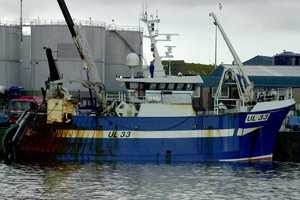|
Extensive research carried out by an Industry/Science Partnership (ISP) has found that design improvements to fishing trawls resulted in a reduction in the amount of undersized whitefish caught.
The results add fuel to the argument that technical solutions may play part of a plan to head of fishing closures of the North Sea.
A two-part report from the Fisheries Research Service highlights new information on the effects of fishing gear design parameters such as mesh size, twine size and square mesh panel positions are likely to prove important in discussions surrounding the current difficulties with whitefish stocks.
Funded by the Scottish Executive's GBP 1 million fisheries science package, the first part of the report produced by the partnership study concentrates on gear configuration.
FRS fishing gear specialist Dick Ferro said: "This Government initiative gave us an excellent opportunity to work with the industry to understand better how gear design can improve conservation.
"On the whole the results confirm that implementing changes in gear design will reduce the discarding of young fish. Some loss of marketable fish just above minimum landing size may occur but within a year or two the increased survival of young fish should benefit the fleets."
The aim of the ISP study was to gather information on the effect of conservation measures aimed at recovering fish stocks and involved collaborative gear trials by fishermen and scientists. Given the serious state of cod stocks and the need to safeguard haddock and whiting, the appearance of the new results are timely.
Partnership members include the Scottish Executive Environment and Rural Affairs Department, Fisheries Research Services, North Atlantic Fisheries College, Scottish Fishermen's Federation and Sea Fish Industry Authority.
The second part of the report examines a wide range of biological issues that affect the Scottish fishing industry. During the period 15 different vessels were chartered to investigate such diverse topics as the Rockall haddock stock and the structure of fish populations.
Fisheries management team co-ordinator at FRS Andrew Newton said: "This initiative by the Scottish Executive created the ideal platform for joint investigations by the fishing industry and scientists into biological aspects that required further information.
"Some of the results have already been used in negotiations on the Rockall haddock stocks within the North East Atlantic Fisheries Commission (NEAFC) whilst the inshore surveys have provided a better insight into the structure of fish populations around Shetland and down the west coast of Scotland.
"Other surveys looked at the potential of new fishing opportunities and although these studies suggested only limited scope for new fisheries or expanding existing fisheries they nevertheless provided invaluable biological information on the fish stocks around the Scottish coast."
|
